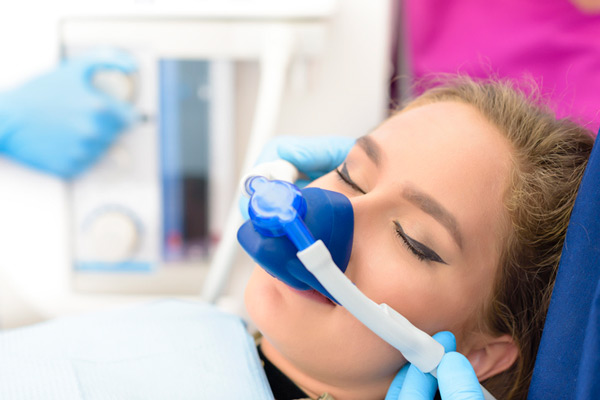Sedation Dentistry
Lakewood, CA
 If the idea of visiting the dentist makes you scared or tense, you’re not alone. We’re certainly no strangers to this negative stigma, but we can assure you that an appointment with us is far preferable to living with a toothache, cavity or other problem. For most people, apprehension toward the dentist can be traced back to a very common factor: fear of pain or the invasiveness that comes with several treatments. In many cases, that vulnerability alone is enough to keep a significant number of people from setting foot in our door. Fortunately, we have a solution for such nervous patients. If the idea of visiting the dentist makes you scared or tense, you’re not alone. We’re certainly no strangers to this negative stigma, but we can assure you that an appointment with us is far preferable to living with a toothache, cavity or other problem. For most people, apprehension toward the dentist can be traced back to a very common factor: fear of pain or the invasiveness that comes with several treatments. In many cases, that vulnerability alone is enough to keep a significant number of people from setting foot in our door. Fortunately, we have a solution for such nervous patients.
Today, we at Lakewood Dental Arts will answer a few of the most frequently asked questions about sedation dentistry, from how it works to the process of each method and, most importantly, whether it’s the right choice for you. If you or a loved one suffer from anxiety about the dentist and are considering sedation, please make an appointment to discuss your options today by calling (562) 384-1091.
What does “sedation” mean?
Sedation involves the act of administering a drug to the patient prior to beginning any treatment. The process is also called “sleep dentistry”, but this is not entirely accurate since there are actually different levels of sedation based on factors such as the specific drug used as well as dosage. These levels are:
| • |
Minimal sedation- Awake, but completely relaxed.
|
| • |
Moderate sedation- Formerly known as “conscious sedation”, drowsier but capable of being awakened such as with a gentle shake, may result in slurred words and memory loss about the treatment.
|
| • |
Deep sedation- On the edge of consciousness, but still capable of being awakened.
|
| • |
General anesthesia- Complete unconsciousness. |
For most dental procedures, the patient is usually kept awake except when under general anesthesia.
What types of sedation are there?
Regardless of which method is applied, patients will also typically receive a local anesthetic to numb the target area for the procedure and relieve any pain or discomfort. Types of sedation include:
| • |
Inhaled minimal sedation - The patient breathes nitrous oxide (known in layman’s terms as “laughing gas”) via a mask placed over their nose. This helps relax the patient. Our doctors can control the amount of nitrous oxide received, and the gas typically wears off quickly. It should be noted that this is the only sedation method in which you may be able to drive yourself home after completing the procedure.
|
| • |
Oral sedation - This can range from inducing minimal to moderate levels, depending on the dose. Minimal level sedation generally requires a pill (Ex- Halcion, which is in the same drug family as Valium) taken about an hour prior to treatment. A larger dose will induce moderate sedation.
|
| • |
IV - Induces moderate level sedation. The drug is administered through a vein, allowing it to take effect more quickly. As with nitrous oxide, our doctors can continually adjust the level of sedation as needed.
|
| • |
General anesthesia - Deep sedation, involves medication that will render you either nearly or fully unconscious throughout the procedure. While in this deep sleep, the patient cannot be easily awakened until after the anesthesia’s effects have worn off or are reversed with a different medication. |
Who is sedation most appropriate for?
Sedation dentistry is generally reserved for individuals whose fear or anxiety hinders or prevents them from visiting the dentist. The following types of people generally stand to benefit the most from sedation:
| • |
People with a low pain threshold.
|
| • |
People with difficulty sitting still in the dental chair
|
| • |
People with moderate or high teeth sensitivity.
|
| • |
People with a sensitive gag reflex.
|
| • |
People requiring a significant amount of dental work. |
Children may sometimes be given sedation if/when they are too afraid of the dentist or persistently uncooperative during their visit. After all, we can’t perform treatment safely if our patient is upset or refusing to sit still. Nitrous oxide is usually safe for kids and can be just as easily controlled. Fewer dentists on average are trained to administer oral sedation on children, though it can also be safe when kept within the recommended dosage for his/her age and weight. |